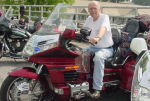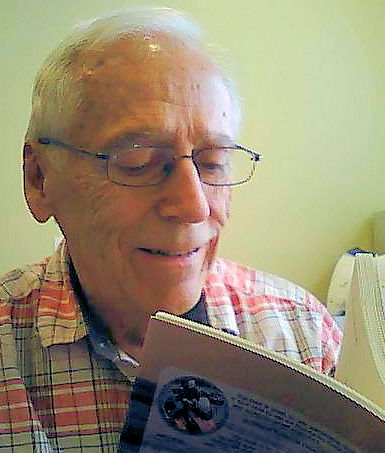The Harley-Davidson - A Book Review A short history of the Harley-Davidson motorcycle This article is a review of a book called The Harley-Davidson, written by Allan Girdler and Jeff Hackett. This book is available through MBI Publishing. The book is the August, 2002 selection from the Motorcycles site feature, "Walt's Motorcycles Book Club." This book grabs your attention as soon as you see the beautiful picture of an early Harley-Davidson Knucklehead motorcycle on the cover. On the 96 pages of the book you'll find 75 full color pictures and 13 black-and-white pictures. I was amazed at the level of detail in the pictures. There are many close-ups of engines and you'll feel that you're standing right there. Even the lettering on coils and the screwdriver marks on fasteners is clearly shown. This attention to detail will help you to better understand how these old Harleys were put together. Chapters in the book include: Working on the Railroad: 1903; Early Production: 1904-1908; V-Twins Rule: 1909-1929; The Big Twin Era: 1948-1980; Independence and Evolution: 1980-1997; and New and Improved: 1994-2000. The founders of Harley-Davidson were men who had the right talents at the right time to develop a motorcycle and create a company to sell it. Hundreds of other motorcycle companies fell by the wayside but Harley succeeded. Here's an excerpt from the book:
Both Bill Harley and the Davidson brothers were railroad men used to timetables and building and maintaining machinery that would be reliable and meet schedules. They seemed to carry this work ethic over into the motorcycle business and it appears to have paid off. While other early motorcycles were built by fitting a motor into a bicycle frame, the H-D founders built their motorcycle around the engine and moved the pedals back where eventually they were removed entirely. The authors show close-ups of the first Harley-Davidson clearly showing this concept. Early models were not identified as today. They were named according to years of production. Thus, in 1910 they sold Model 6 machines since that was the sixth year of H-D production. Different variations of Model 6 motorcycles were denoted by adding a letter such as A or B. As the years went by we all know what happened. The model designation alphabet got extremely complex. That's what 100 years can do. The authors give quite a few facts about Harley-Davidson that you may not know. Here are some examples: They talk about the 1928 Model D, sometimes referred to as the three-cylinder Harley. This reference was made by Indian enthusiasts because Harley had placed an ignition coil forward of the first cylinder and in an upright position thereby giving the appearance of a third cylinder. In 1949 the leading-link forks that went back to 1907 were replaced with a telescopic front suspension. The bikes were known as Hydra Glide models. In 1958 the rigidly mounted rear wheel was given a suspension with conventional shock absorbers and swingarm. The models were called Duo Glide since there was now suspension in both front and rear. In 1965 some models were fitted with electric starters. They were called Electra Glide models. Getting back to the front cover again, Girdler and Hackett talk about what was done to bring Harley-Davidson out of the Depression of the early 1930s. Here's an excerpt:
As you read through the book and view the pictures, you'll see that Girdler and Hackett paint the picture of a great 100 years of Harley-Davidson motorcycles but then don't really have an ending to the book that wraps it all up. I can certainly understand this since there is no ending for Harley-Davidson. They will continue to produce motorcycles that their customers want for many years to come. Whatever the challenges of the market they seem to always find a way to satisfy their loyal customers. Reading this book will tell you how they did it in the past and how they will continue to do it in the future.

|
||||||||
© 2013 Walter F. Kern. All rights reserved.
|
| You CAN Ride a Bike |
| 10 Ways to Be Safe |
| Latest Pictures |
 |
| Pictures of the Week |







